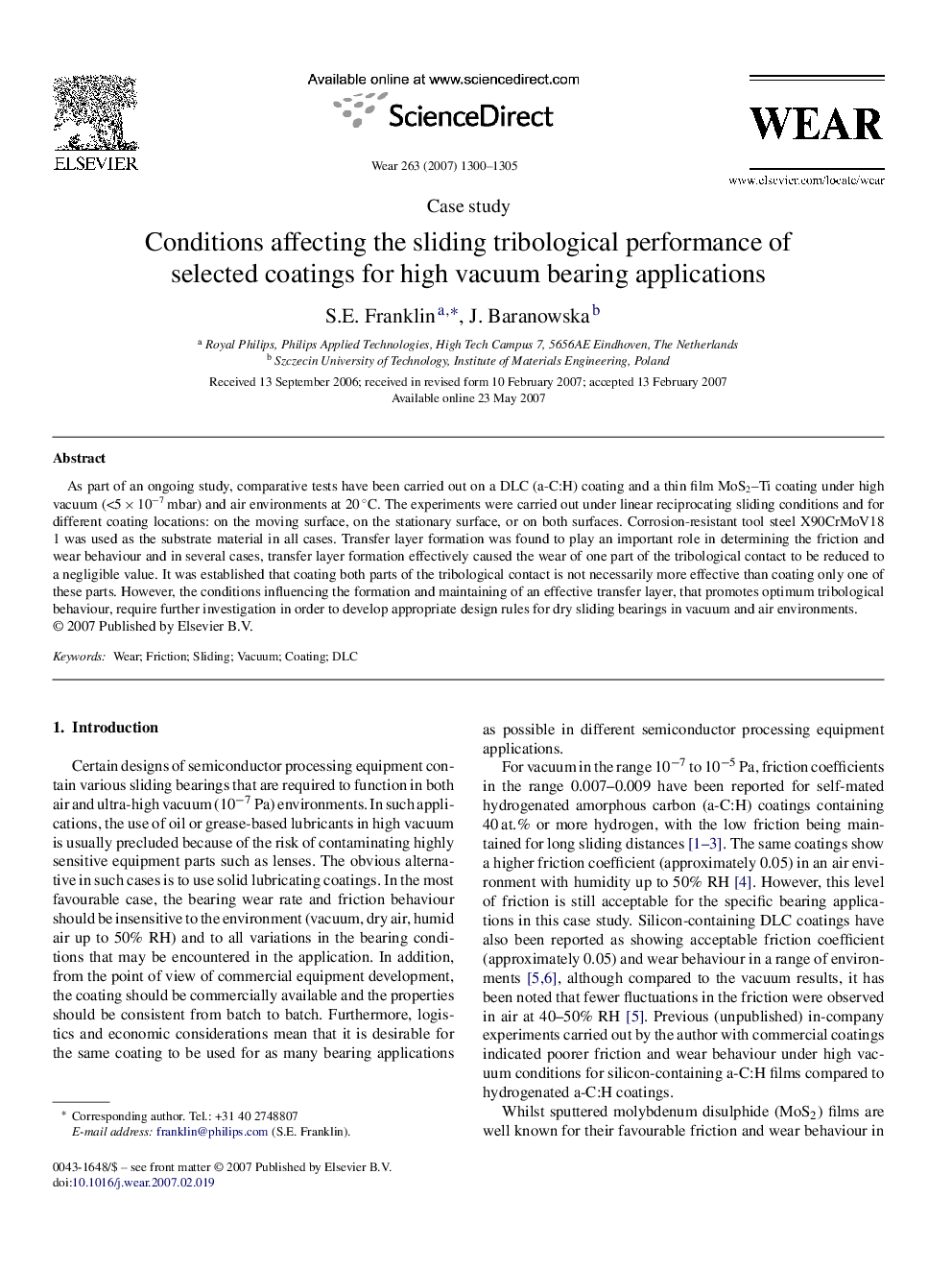| Article ID | Journal | Published Year | Pages | File Type |
|---|---|---|---|---|
| 620026 | Wear | 2007 | 6 Pages |
As part of an ongoing study, comparative tests have been carried out on a DLC (a-C:H) coating and a thin film MoS2–Ti coating under high vacuum (<5 × 10−7 mbar) and air environments at 20 °C. The experiments were carried out under linear reciprocating sliding conditions and for different coating locations: on the moving surface, on the stationary surface, or on both surfaces. Corrosion-resistant tool steel X90CrMoV18 1 was used as the substrate material in all cases. Transfer layer formation was found to play an important role in determining the friction and wear behaviour and in several cases, transfer layer formation effectively caused the wear of one part of the tribological contact to be reduced to a negligible value. It was established that coating both parts of the tribological contact is not necessarily more effective than coating only one of these parts. However, the conditions influencing the formation and maintaining of an effective transfer layer, that promotes optimum tribological behaviour, require further investigation in order to develop appropriate design rules for dry sliding bearings in vacuum and air environments.
